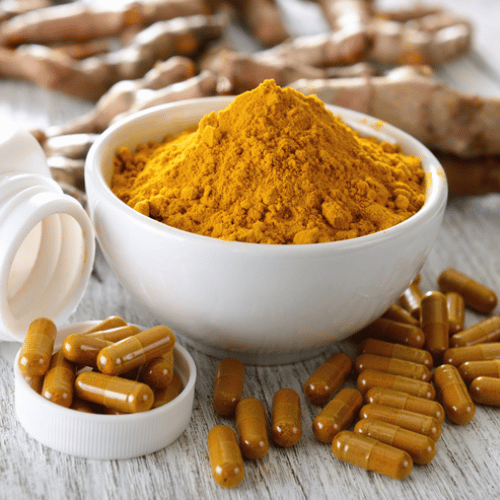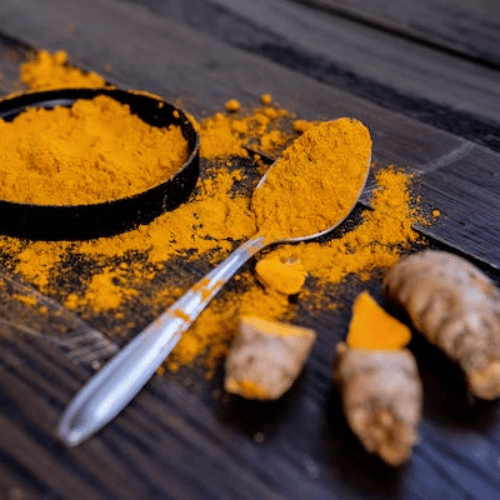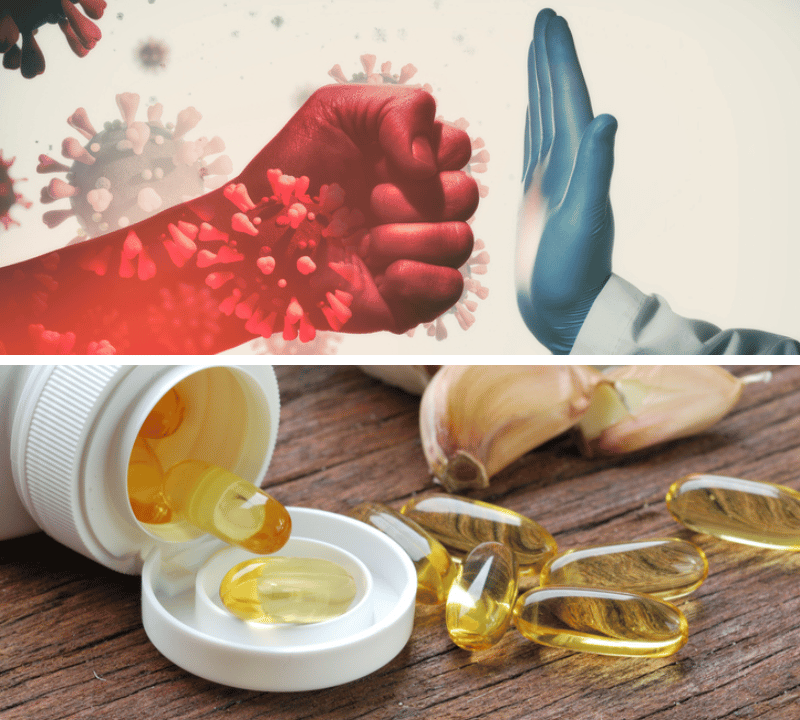Have you ever contemplated the radiant golden hue of a curry and pondered its potential as a formidable adversary to joint pain? Introducing Turmeric, the distinguished spice that transcends its culinary uses to become a venerated component in traditional medicine. For generations, this luminous substance has been at the forefront of combating many ailments, particularly excelling in alleviating joint discomfort.
However, the narrative intensifies with the emergence of Curcumin, the most dynamic and powerful constituent of Turmeric, which has garnered significant attention for its role in mitigating joint pain. The pressing inquiry now is: In the quest for joint pain relief, which of these illustrious contenders holds the advantage? We invite you to engage in a compelling examination that promises to illuminate and direct you toward the solution that best aligns with your physiological requirements. Let us demystify the enigma and ascertain whether Turmeric or Curcumin is the quintessential champion for relieving joint pain.
Key Takeaways: Harness the Therapeutic Virtues of Curcumin for Joint Comfort
Curcumin: A Formidable Adversary to Pain
Venture into the essence of turmeric, and you shall encounter curcumin — its most vital element, celebrated for its remarkable anti-inflammatory capabilities. This formidable agent surpasses ordinary turmeric's efficacy in assuaging joint pain and inflammation. It represents the concentrated essence of remediation you have been seeking.
Maximize the Efficacy of Curcumin
Envision enhancing the full spectrum of curcumin's benefits with a strategic approach. You elevate its therapeutic impact by amalgamating it with bioavailability boosters such as piperine found in black pepper or incorporating it with lipids. This strategy signifies a profound transformation in how your body utilizes curcumin's healing properties.
Nature's Apothecary: A Repository of Solace
Embark on a journey through nature's apothecary, replete with time-honored remedies. Ginger, with its invigorating essence, omega-3 fatty acids, the unsung sentinels of cellular integrity, and green tea, a tranquilizing brew, all possess a unifying attribute — their anti-inflammatory properties. Collectively, they compose a holistic regimen for the amelioration of joint pain.
Embrace these revelations and embark on a path to reclaim serenity and agility as nature intended. With each stride, you are not merely progressing but advancing towards a future of enhanced well-being.
An Exploration of Turmeric and Curcumin: Therapeutic Implications

Turmeric extract, sourced from the root of the Curcuma longa plant, is a vibrant yellow spice that is not only a staple in culinary traditions, particularly in curry dishes, but also has a storied history in traditional medicine due to its medicinal attributes. Curcumin, the principal bioactive component found within turmeric, is credited with the spice's health-promoting properties, including its anti-inflammatory and antioxidant capabilities. Consequently, turmeric extracts enriched with curcumin are esteemed for their considerable therapeutic promise.
Both turmeric and curcumin have been the subject of extensive research regarding their efficacy in managing various health conditions, notably joint discomfort and arthritis.
Turmeric: The Esteemed Golden Spice

Turmeric, often hailed as the "golden spice," has been embraced for millennia as a natural remedy for various health issues, owing to its anti-inflammatory attributes. However, it is important to note that turmeric in its spice form contains only a modest concentration of curcuminoids—between 2 and 9 percent. This relatively low percentage suggests that the spice's capacity to alleviate joint pain may be less significant than supplements with a higher concentration of curcuminoids.
Despite this, turmeric continues to be a cornerstone in traditional medicinal practices for its:
- Treatment of skin, upper respiratory, joint, and gastrointestinal disorders
- Provision of anti-inflammatory benefits
- Delivery of antioxidant effects
Curcumin: The Potent Bioactive Compound
Curcumin stands as the cornerstone compound of turmeric, renowned for its anti-inflammatory, antioxidant, and potential therapeutic properties. Scientific investigations have indicated that curcumin may confer health advantages, such as addressing knee osteoarthritis and rheumatoid arthritis, and may even offer protective benefits against neurodegenerative conditions like Alzheimer's disease.
The remarkable anti-inflammatory potency of curcumin is ascribed to its capacity to modulate various biochemical pathways involved in inflammation. This multifaceted approach to inflammation regulation renders curcumin a more productive agent for joint pain relief than turmeric alone.
Joint Pain and Inflammation

Joint pain can stem from various factors, including arthritis, injury, and aging, with inflammation playing a significant role in pain and discomfort. Reducing inflammation is a key part of alleviating joint pain. Anti-inflammatory compounds like those found in turmeric and curcumin can effectively lessen inflammation and provide relief.
Causes of Joint Pain
There are numerous causes of joint pain, such as:
- Arthritis: characterized by inflammation in the joints, which can result in arthritis pain, swelling, stiffness, and limited mobility.
- Osteoarthritis: induced pain through cartilage degradation, bone shape alteration, and inflammation of the affected joints.
- Rheumatoid arthritis: an autoimmune disease that causes chronic inflammation in the joints.
- Gout: a form of arthritis caused by the buildup of uric acid crystals in the joints.
- Bursitis: the inflammation of the fluid-filled sacs (bursae) that cushion the joints.
- Injury: trauma to the joint, such as a sprain or strain.
These are just a few examples of the many possible causes of joint pain, which can significantly impact pain and physical function.
Conversely, gout is associated with joint pain due to the accumulation of uric acid crystals in the joints, leading to inflammation, swelling, redness, and intense pain.
The Importance of Anti-Inflammatory Compounds
Anti-inflammatory compounds, like those found in turmeric and curcumin, can be beneficial for joint pain as they can reduce inflammation. For example, curcumin has been found to:
- Regulate inflammatory signaling pathways
- Suppress the production of inflammatory molecules
- Decrease the expression of genes related to oxidative stress and fibrogenesis pathways
These actions demonstrate its anti-inflammatory effects, characteristic of a nonsteroidal anti-inflammatory drug.
Reducing inflammation and pain with these compounds can help lessen joint pain and enhance overall health.
Comparing Turmeric and Curcumin for Joint Pain Relief
Turmeric and curcumin both show potential for relieving joint pain. However, curcumin is more potent with its higher concentration of anti-inflammatory compounds. While turmeric can reduce joint pain and inflammation, its low curcuminoid content may limit its effectiveness, making curcumin supplements a potentially better option.
With its higher concentration of anti-inflammatory compounds and ability to inhibit specific inflammatory cells, Curcumin is more effective in reducing joint pain and inflammation.
Turmeric for Joint Pain
While turmeric can help lessen joint pain and inflammation, its low curcuminoid content may make it less effective than curcumin supplements. Still, with its anti-inflammatory properties, turmeric has shown benefits in relieving joint pain.
For the best results, consider using a high-quality curcumin supplement, as curcumin supplements with a high concentration of curcuminoids are recommended.
Curcumin for Joint Pain
Curcumin is more effective in reducing joint pain and inflammation due to its higher concentration of anti-inflammatory compounds. Research has demonstrated curcumin’s ability to:
- Inhibit inflammation
- Reduce pain in a variety of health conditions, including joint pain
- Reduce osteoarthritis pain, as indicated by a study published in BMC
- Improve symptoms and inflammation in patients with arthritis, as shown in several randomized controlled trials
Therefore, curcumin supplements may be a more potent option for joint pain relief compared to turmeric.
Choosing the Right Supplement for You

Choosing the right supplement is a personal decision influenced by dosage, bioavailability, and safety factors. If you’re considering a supplement for joint pain relief, keep these factors in mind and seek advice from a healthcare professional before beginning any new supplement regimen.
Choosing products tested by a third party can also ensure both safety and quality.
Dosage Recommendations
Dosage recommendations for joint pain relief differ. Curcumin supplements usually require a daily intake of 200-1000mg, while turmeric supplements suggest a daily dosage of 500-2,000 milligrams. As individual needs vary, consult a healthcare professional before changing any supplement dosage.
Enhancing Bioavailability
To enhance the bioavailability of turmeric and curcumin, look for supplements that contain piperine or other absorption-enhancing ingredients. Piperine, a compound found in black pepper, has been shown to increase the bioavailability of curcumin by up to 2000%.
New, highly bioavailable curcumin formulations and consuming curcumin with a fat source can increase its bioavailability.
Safety and Precautions
Before starting any supplement regimen, seek advice from a healthcare professional and opt for products tested by third parties for safety and quality assurance. Although turmeric and curcumin are generally safe and don’t cause serious side effects for most people, some individuals may experience mild side effects like:
- stomach upset
- nausea
- dizziness
- diarrhea
It is also essential to be aware of potential interactions between turmeric or curcumin and other medications and potential risks for individuals with certain health conditions.
Now that you know about the imperative factors such as dosage, bioavailability, and safety, essential when selecting supplements for alleviating joint discomfort, we recently conducted an in-depth examination of Turmeric/Curcumin supplements. Our extensive analysis thoroughly compares five premier turmeric/curcumin supplements in the marketplace. We carefully scrutinized their effectiveness, constituent ingredients, and consumer testimonials. This review aims to give our readers a well-informed foundation to discern a supplement that aligns seamlessly with your health objectives and requirements. We invite you to gain a deeper understanding of these distinguished supplements and to make an informed decision regarding your joint health by perusing this complete review.👇
Alternative Natural Interventions for Joint Discomfort
In natural therapeutics, several substances, including ginger, omega-3 fatty acids, and green tea, are recognized for their anti-inflammatory and antioxidant capabilities. These natural interventions may serve as adjunctive or alternative options for individuals seeking non-pharmacological strategies to manage joint discomfort.
Ginger
Ginger, a botanical relative of turmeric, offers a natural approach to mitigating joint pain through its anti-inflammatory effects. Gingerol, which possesses anti-inflammatory and antioxidant properties, has been documented to alleviate muscle discomfort, ease arthritis symptoms, and modulate inflammation in autoimmune conditions. Before incorporating ginger as a therapeutic agent for joint pain, seeking guidance from a healthcare professional is always advisable.
Omega-3 Fatty Acids
Omega-3 fatty acids are present in sources such as:
- Fatty fish
- Flaxseed
- Chia seeds
- Walnuts
- Canola oil
Exhibit anti-inflammatory actions that may aid in the reduction of joint pain. Research indicates that omega-3 fatty acids diminish inflammation and enhance cardiovascular health, which may indirectly benefit joint pain management. The recommended intake of omega-3 fatty acids ranges from 250 to 500 mg daily; however, professional medical advice is essential to tailor the dosage to individual needs.
Green Tea
Green tea is renowned for its potent antioxidant effects and its potential role in joint pain alleviation. The benefits of green tea for joint health include:
- The catechins in green tea may bolster the health of joints and skeletal muscle.
- Research suggests a correlation between green tea consumption and decreased joint pain and inflammation.
- Green tea consumption may offer symptomatic relief for individuals with rheumatoid arthritis.
Consistent intake of 2-3 cups of green tea daily over an extended period may contribute to joint pain mitigation.
Let's Wrap It Up!
In a nutshell, let's celebrate the wonders of turmeric and its mighty component, curcumin. These natural stars have a unique talent for easing joint pain, all thanks to their anti-inflammatory superpowers. Turmeric has long been a favorite in traditional healing, while curcumin brings an extra punch, loaded with more inflammation-fighting goodies. Remember, choosing the right supplement is key, so think about the dose, how well your body absorbs it, and its safety. And don't go it alone – a chat with your healthcare provider is always a smart move.
But that's not all! Nature's Pantry has more in store with ginger, omega-3 fatty acids, and green tea, each offering unique support in your journey to joint comfort. Embracing these natural wonders can lead to happier, more comfortable days. Tailor them to your needs, and you're on the path to waving goodbye to pain.
Speaking of natural wonders, have you ever pondered how turmeric stacks up against saffron? I've dived into this spicy debate in another article, Turmeric vs. Saffron: 'Is Saffron Healthier Than Turmeric? A Comparison of Nutrition and Health Benefits.' Exploring these two 'super spices' and their health benefits is fascinating. Check out if you're curious to learn more and spice up your knowledge. Let's keep exploring and enjoying the bountiful gifts of nature together!👇
Frequently Asked Questions
Is curcumin or turmeric better for arthritis?
Studies suggest that curcumin, the active component of turmeric, can reduce joint inflammation and improve pain and mobility in people with osteoarthritis. Although turmeric has health benefits, most studies suggest that its concentrated form – curcumin – is more effective for treating arthritis symptoms.
How quickly does turmeric help joint pain?
Studies show that eight to 12 weeks of treatment with turmeric extracts can reduce joint pain due to arthritis, compared with a placebo. However, more research is needed to confirm these findings.
How can I enhance the bioavailability of turmeric and curcumin supplements?
To enhance the bioavailability of turmeric and curcumin, look for supplements that contain piperine or other absorption-enhancing ingredients.
Are there any potential side effects or interactions when taking turmeric or curcumin supplements?
Taking turmeric or curcumin supplements may cause mild side effects such as stomach upset, nausea, dizziness, or diarrhea. Additionally, there could be potential interactions with other medications or health conditions, so it's important to be aware of these risks.
Thanks for taking this journey with us to explore the joint pain benefits of Turmeric vs Curcumin. If you want to know more about the top Turmeric/Curcumin supplements in the market, check out our article referenced above as well - it contains significant information to add to your library of knowledge!
Also, please return soon to check out our next review of another incredible supplement – we’re always looking out for YOU!
*We are not qualified medical advisors. The content here is only based on our personal opinions and should NOT be used as a substitute for a healthcare professional's advice!











Member discussion